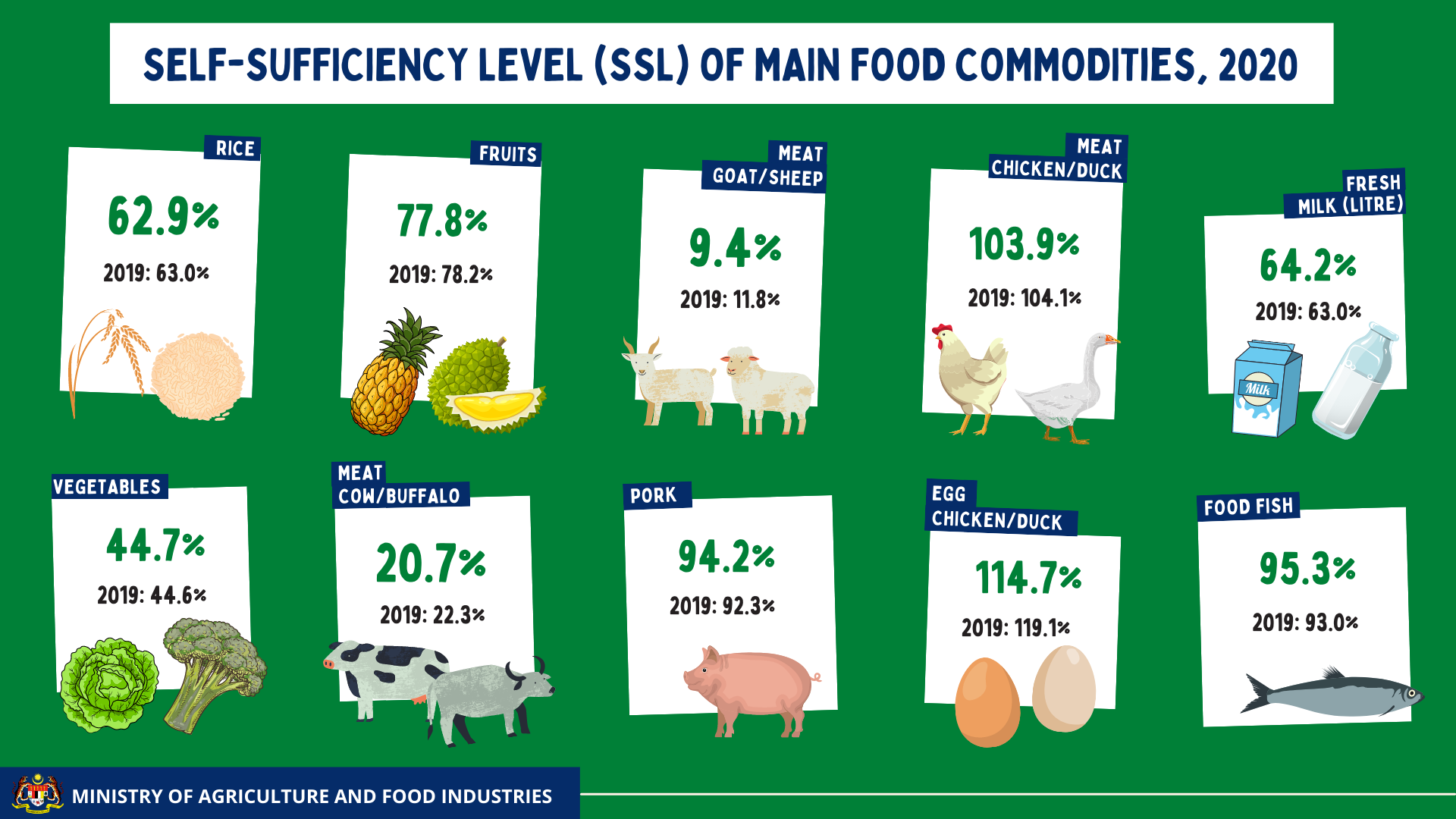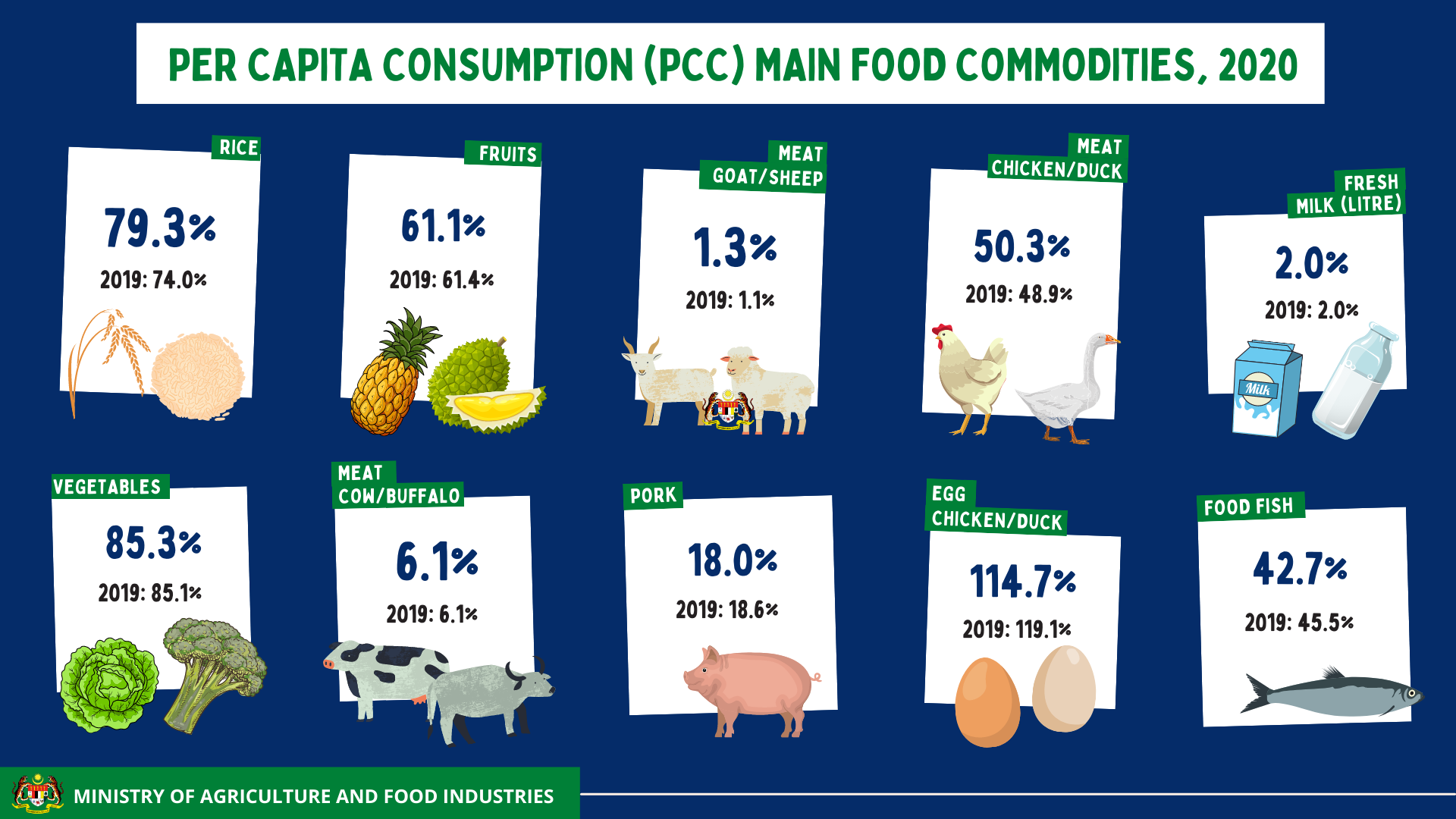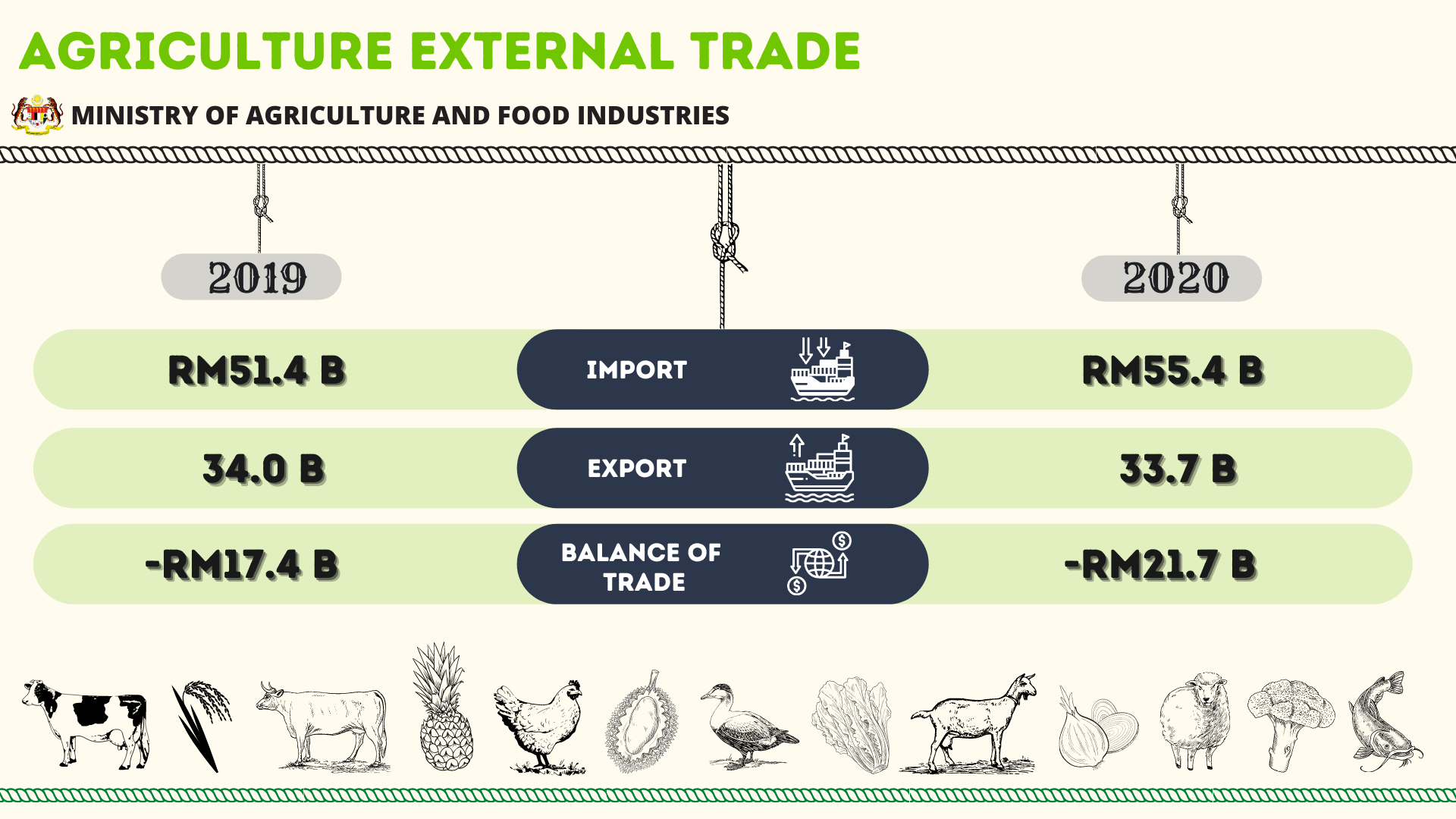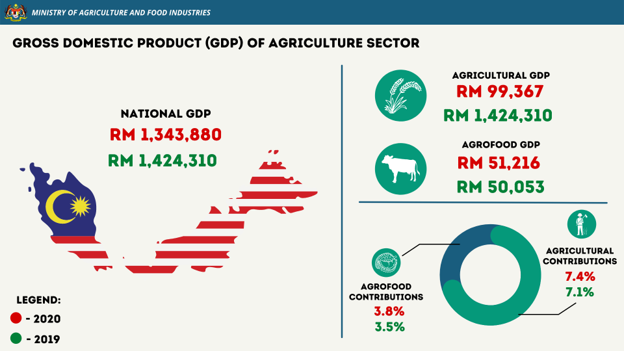Availability
|
| The Availability Cluster (KTS) is led by the Ministry of Agriculture and Food Industry (MAFI) and coordinated by the Secretariat of the National Agricultural Advisory Council (MPPN), MAFI. The KTS cluster is comprised of government ministries/ agencies, academics and non -governmental organizations. The cluster focuses on the availability dimension to ensure food supply determined by local production, buffer stocks and even trade. |
The Terms of Reference for this cluster are:
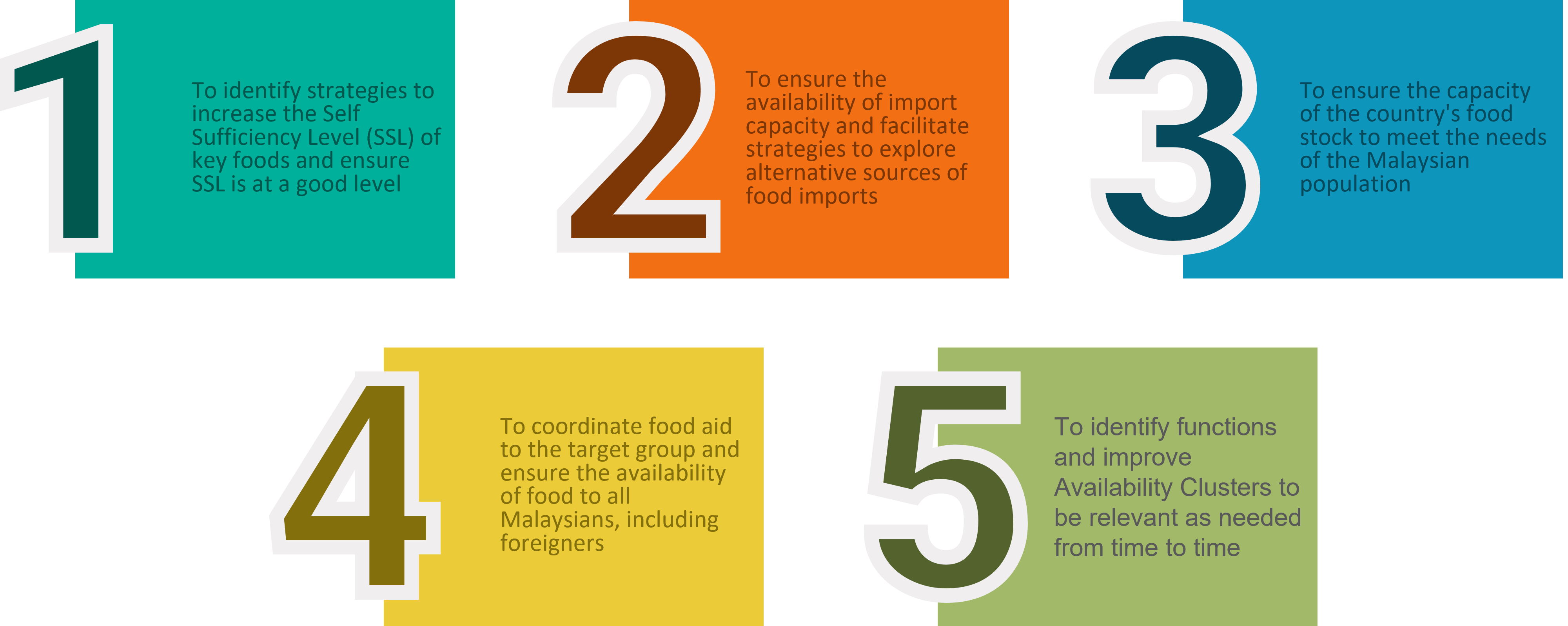
To ensure that there is always sufficient food supply in the country, the Government is always committed to diversifying initiatives based on the food security dimension. There are various programs available in terms of availability to meet this need, including:-
| |
| Community Agricultural Development known as an Urban Agriculture Program is a program that helps households to reduce living costs through food production with the guidance of the Department of Agriculture. This program involves residents in urban and suburban areas with the cooperation and involvement of various relevant departments and agencies including the State and Federal levels. The agricultural community serves as one of the strategies to encourage social interaction between locals. Besides, community-based agriculture helps to increase self-motivation among program participants with the initiative to start in the communities and work together in teams to produce food products either for their consumption or for sale. For more info, click here.
| |
| |
| The Organic Agriculture Project is one of the Budget 2021 initiatives under the Food Security Fund allocated to the Ministry of Agriculture and Food Industry (MAFI). This project aims to create agricultural activities to increase the production of sufficient, quality and safe food through organic farming methods that are more environmental. The implementation of the project involves crop planting, livestock breeding and aquaculture projects covering preliminary work, development and site preparation, infrastructure facilities, procurement of machinery and equipment as well as product development and marketing Target groups which can apply for this programme include Farmers' organization, Agropreneurs, Cooperatives, Entrepreneurs/suppliers, Farmers, Livestock breeders, Fishermen, and Non-governmental organizations (NGOs). This is a community-based participation programme with a minimum of 3 people per application. Priority is given to existing and viable agricultural entrepreneurs or new entrepreneurs who are committed and in possession of land or areas on which to carry out agricultural activities. Applications can be made by filling in the application form which can be obtained at the Farmers' Organisation Authority (Lembaga Pertubuhan Peladang) offices, Department of Agriculture, Department of Fisheries, Department of Veterinary Services and MARDI in each state/district. For more info, click here. | |
There are several indicators that are used in determining the status or level of food production of a country, such as:-
| |
| SSL describes the magnitude of production against domestic consumption. It indicates the extent to which domestic supply in the country is derived from production domestic. SSL less than 100 percent indicates insufficient production to meet domestic needs. While for SSL that reaches a rate of 100 percent or more indicates domestic production is sufficient to cover consumption domestic. For more info, click here.
| |
| |
| PCC refers to the amount of food consumed by each person per year. The PCC is measured in kilograms per year.
| |
|
| |
| The balance of trade (BOT), also known as the trade balance, refers to the difference between the monetary value of a country’s imports and exports over a given time period. A positive trade balance indicates a trade surplus while a negative trade balance indicates a trade deficit. The BOT is an important component in determining a country’s current account.
| |
| |
| GDP can be calculated through three (3) main approaches namely Production, Expenditure and Income as follows:-
| |
PUBLICATION













